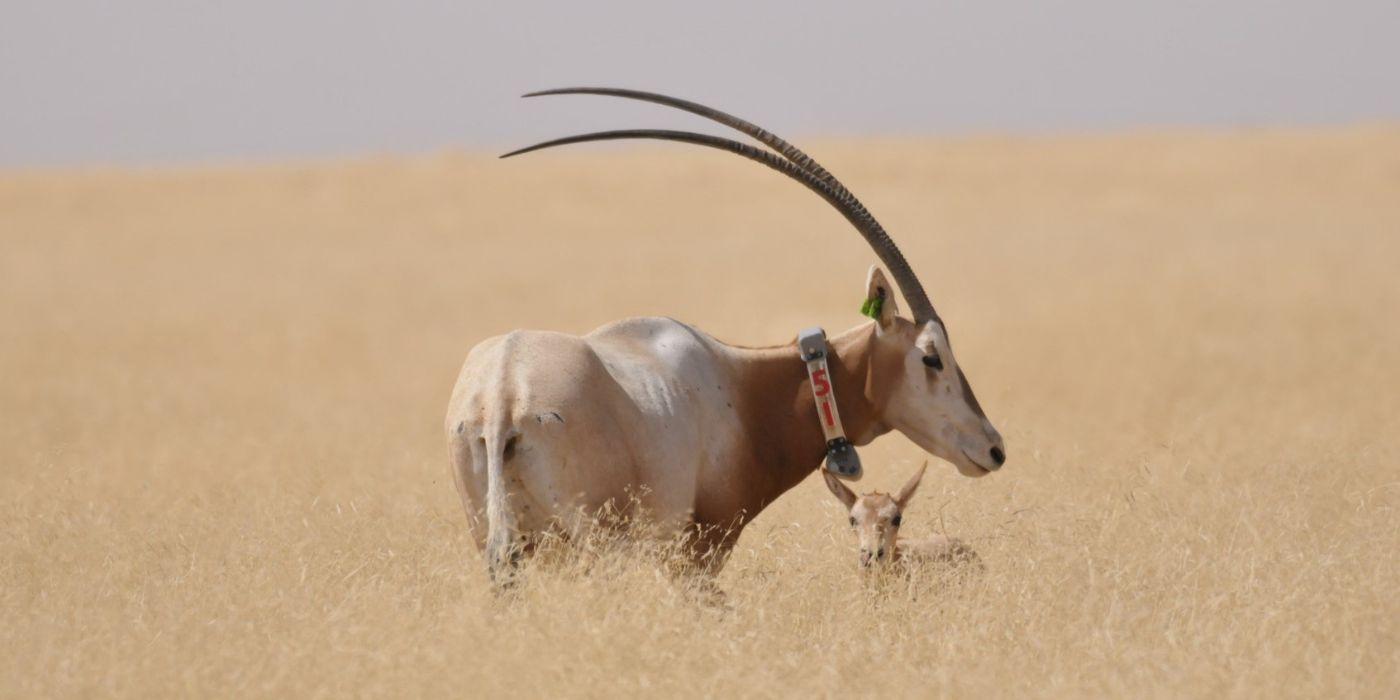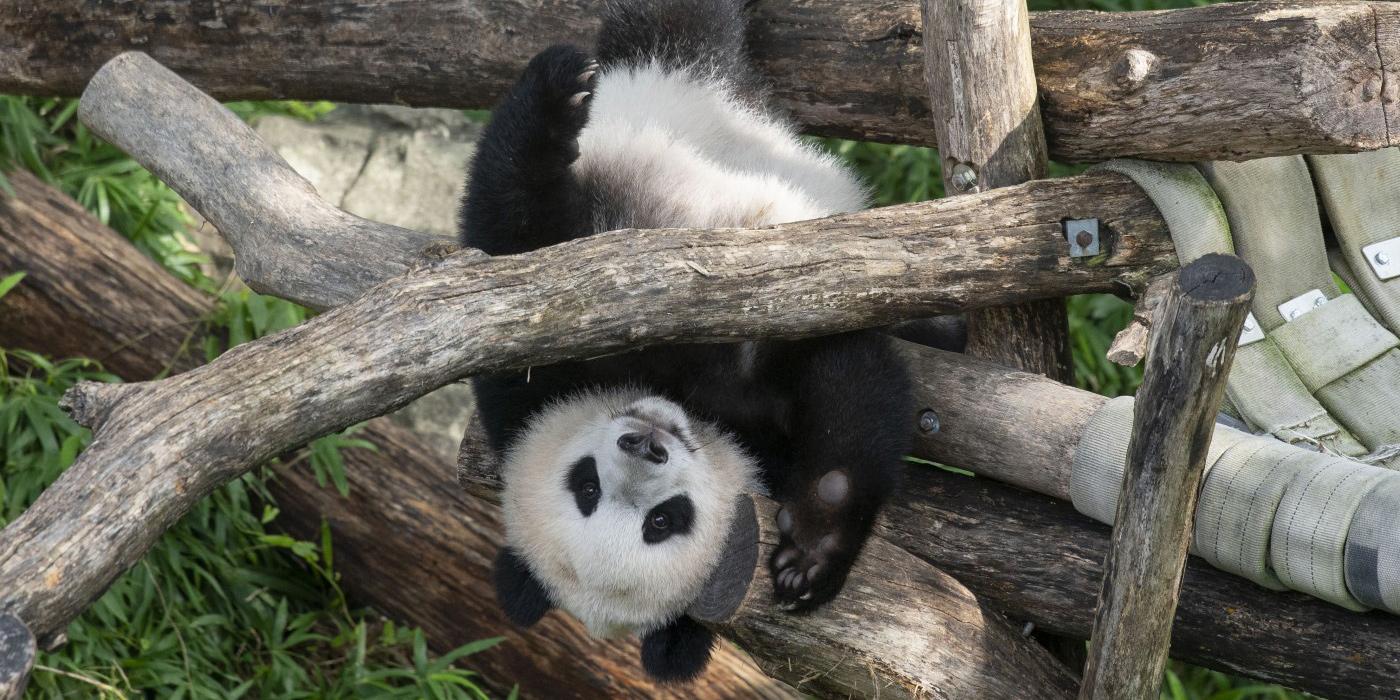Preparing for the Second Release of Scimitar-Horned Oryx to the Wild in Chad
I traveled to the United Arab Emirates in early October to work on the second release of Scimitar-horned Oryx with our collaborators from the Environment Agency—Abu Dhabi (EAD). Scimitar-horned oryx are a desert antelope native to Northern Africa. The first release was completed over the summer when 23 oryx were released back into the wild in Chad. It was the first time any oryx have existed in the wild since the 1980s.
In phase two, we’re hoping to double the number of scimitar-horned oryx in the wild. Last month, while in the United Arab Emirates where the captive breeding population is located, we fit 24 more oryx with GPS collars. We try to fit each oryx with a collar before sending them to the remote Ouadi Rime-Ouadi Achim Game Reserve, the pre-release site in Chad, so that we can monitor their movement and survival. The animals will be shipped to Chad this month. We have 11 males and 13 females ready to make the trip. Several of the females are pregnant, and we’re hoping that they will give birth to healthy calves in Chad. The herd will be fully released to the wild in 2017.
We have been monitoring the first herd of introduced oryx with scientists at the Zoological Society of London. While we monitor the herd’s movements from afar, staff from the Sahara Conservation Fund (SCF) and the Ouadi Rime-Ouadi Achim Game Reserve have been monitoring the oryx on the ground. Based on the data we are collecting from the collars and our partners on the ground, all of the oryx appear healthy and doing well. They are doing so well, that one of the females released last summer recently gave birth to a calf. It’s the first calf to be born in the wild in decades.
The first real test of our reintroduced oryx will be the dry season, which extends from October to July. It’s a critical time, but we’re optimistic that the herd will survive.
Related Species:




